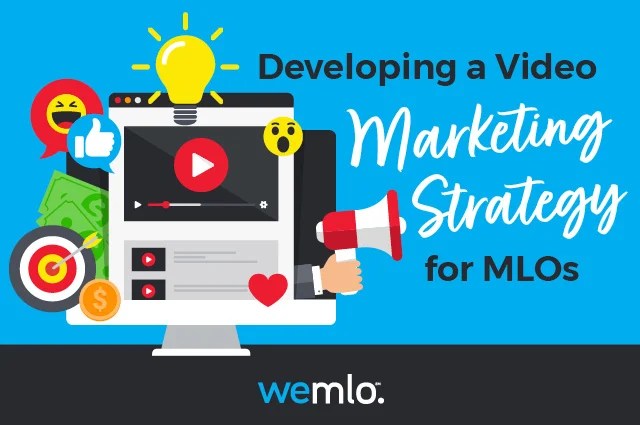Developing a Video Marketing Strategy for MLOs

Six Tips for Implementing a Video Marketing Strategy
Video marketing has gained significant traction over the last decade. In fact, it’s now one of the most powerful marketing tools across generations, geographical areas, and industries. For example, the average user has nearly doubled their amount of videos watched since 2018. In fact, a staggering 87% of video marketers found that the medium delivers a positive ROI, a 54% increase from 2015.
It’s no secret that technology has fundamentally changed the mortgage landscape, and video marketing should be no exception. If you’re looking to launch or up-level a video strategy, start with these six key steps.
Get to know your audience
The key to any successful marketing strategy, video included, is knowing your audience. For example, a video created specifically for first-time buyers will look very different than one aimed at vacation homeowners. You want to ensure that the right audience is receiving the right message, so they find value in your offerings and don’t just tune your brand out.
Consider building buyer personas based on data you’ve collected from current and previous clients. In this exercise, you create an avatar for your target consumer based on their habits, preferences, and relevant demographics. Then, you assign each persona a name or other identity while working to create content that caters to them specifically.
For example, perhaps one of your buyer personas is Jessica the First-Time Homebuyer. Jessica might be a Millennial with a stable job, looking to secure an FHA loan in a major city or suburb. So, to capture Jessica’s attention, you could create a video on FHA basics or how the down payment amount affects loan type. The key is creating a high degree of relevancy, so that group of customers is more likely to watch the video and contact you.
Set goals
It’s impossible to measure the success of a marketing campaign if you don’t outline clear goals from the start. Once you have your buyer personas built out, determine the benchmarks you want to hit to judge success. Do you want to receive a specific number of views, or are email opt-ins more important? Or, perhaps you’re interested in whether or not these videos can convert viewers to leads. Whatever the case, write down your goals so you can refer to them throughout the process and ensure efforts are aligned.
Keep in mind that, particularly if this is your first experiment with video marketing, initial goals may need to be tweaked or adjusted. It can be difficult to accurately predict how social media fans might engage with a new form of content from your brand. If your goals end up being too small, great! You can plan accordingly next time. If they end up being too large, no problem. Simply adjust expectations and continue monitoring progress.
Determine staffing and technological needs
Now that you know what you’d like to get out of your video marketing campaign, you’ll need to determine how to get there. For example, are you relatively tech-savvy, or would it make more sense to contract with a freelance videographer? Do you have the right technology on hand, or will you need to invest? Will you be shooting TikTok shorts on your smartphone or long form, studio-quality video guides?
Your needs will depend entirely on your goals, but at least consider a plan of action for a videographer, editor, camera, lighting, and microphone.
Build a budget
Marketing is an investment! Like any other advertising initiative, video campaigns will require some capital upfront. Determine if this will come from a general marketing budget, or if there are additional funds you can devote to video alone. While you can certainly get by with a smaller budget, high-quality video production can add up. To avoid any surprises, set a firm budget and stick to it.
Start creating
Now for the fun part! Once the strategic pieces are in place, it’s time to start actually recording videos. Experiment with lighting, backgrounds, content, and video length. Then, upload it to your social media channels.
Don’t let fear or insecurity creep in. Just be genuine and have fun with it.
Evaluate success and tweak where appropriate
Once your videos are uploaded, track their progress. Most social media sites offer built-in monitoring capabilities, so you can see the viewership, engagement rate, and viewing time adjust in real-time. Work to identify any patterns.
For example, perhaps your average viewing time is hovering around one minute, even on three- and five-minute videos. This can clue you into adjusting your approach and offering shorter videos that better cater to user preferences. Whatever the case may be, analyze your progress and adapt, if needed.
Wrapping up
Whether you’re a novice or expert, a video marketing strategy can help you reach your goals whether that is catching new audiences’ attention, grow your following, or better serving clients. After all, technology has fundamentally shaped the mortgage industry, and your social media content should be no exception.




